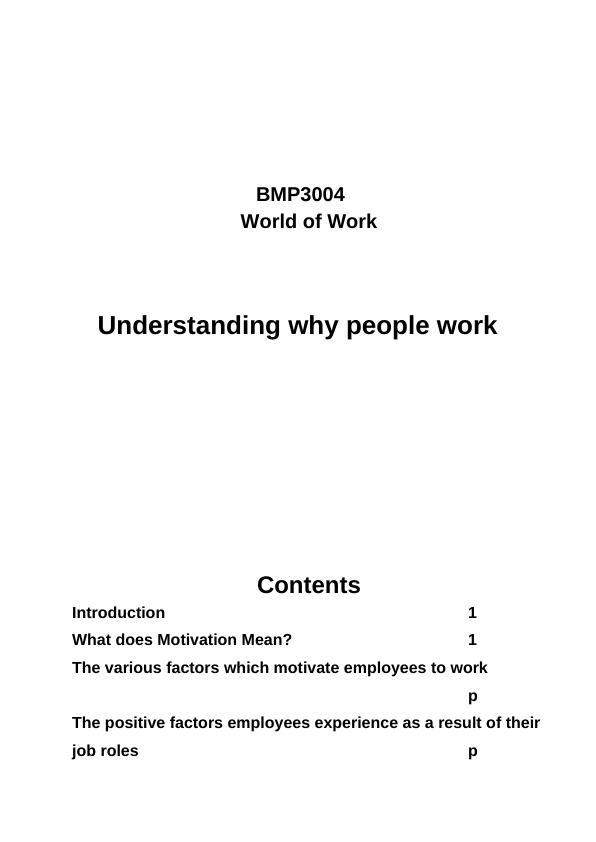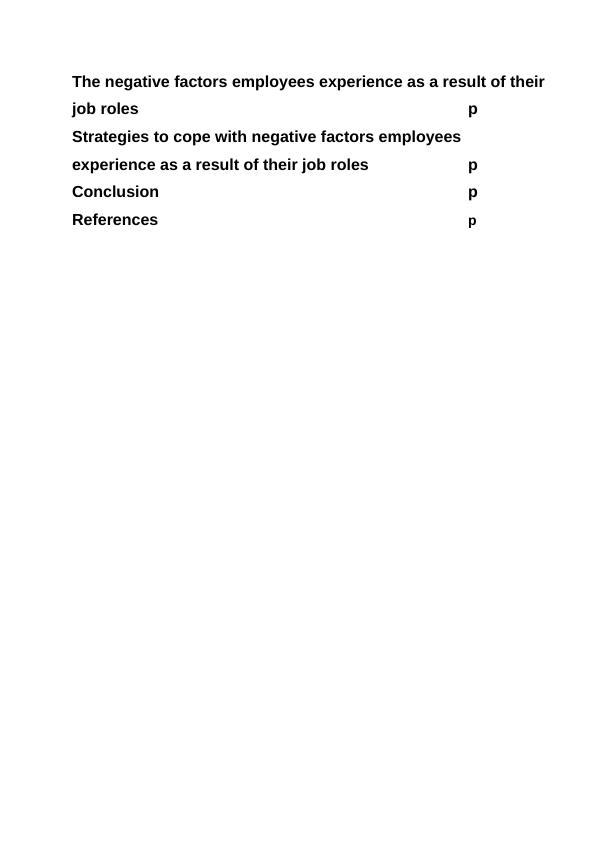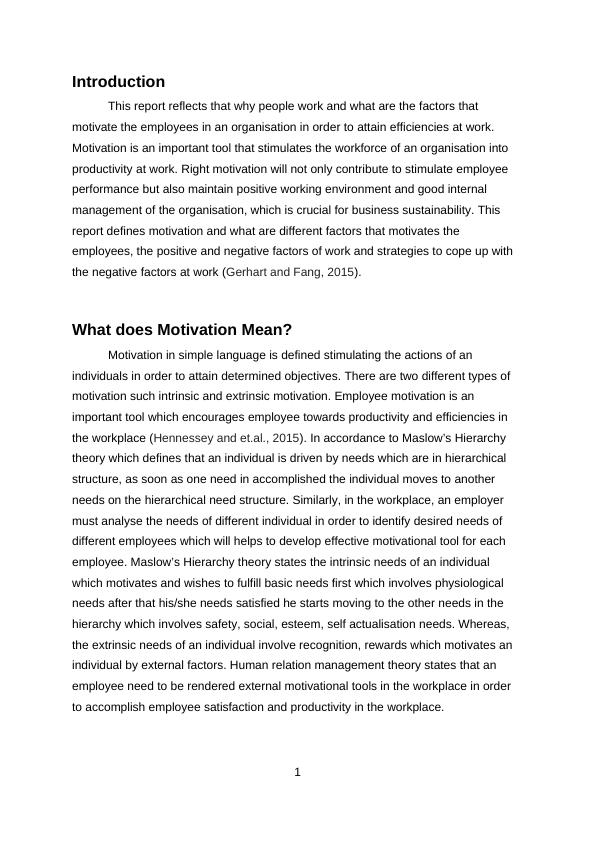Understanding why people work
Added on 2022-12-12
8 Pages1914 Words442 Views
End of preview
Want to access all the pages? Upload your documents or become a member.
Understanding why people work
|8
|2002
|229
Understanding why people work
|8
|1989
|392
Understanding Why People Work and What Motivates Them: A Study on Positive and Negative Factors Experienced by Employees
|8
|2085
|85
Understanding Why People Work: Factors Affecting Employee Motivation
|8
|2045
|321
Understanding why people work
|8
|2062
|293
Understanding why people work and the factors that motivate employees
|7
|1771
|447



